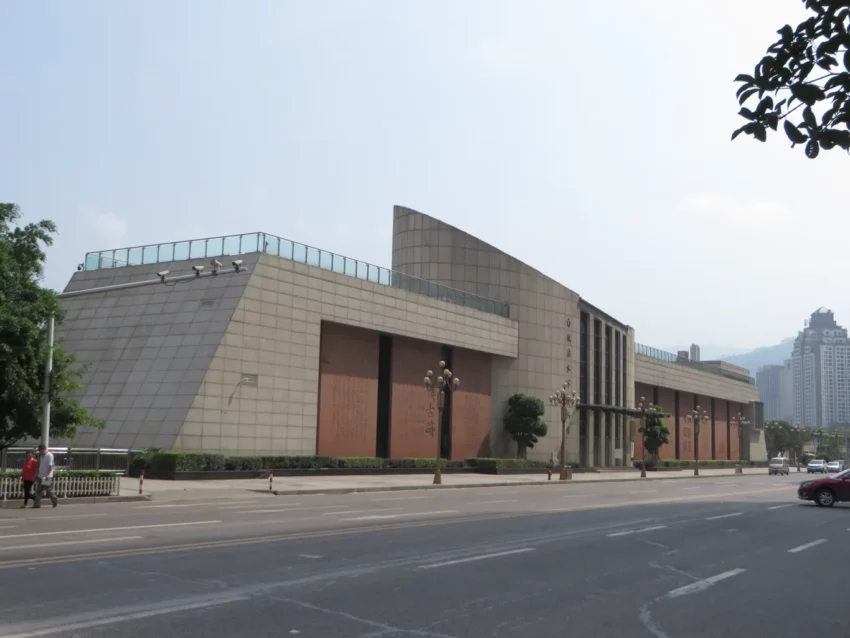Get your dose of History via Email
Baiheliang Underwater Museum: A Window into Historical Hydrology and Calligraphy
Baiheliang Underwater Museum is a unique archeological site and museum located in the Fuling District of Chongqing, China. It offers an unprecedented glimpse into the historical water levels of the Yangtze River and showcases an extraordinary collection of ancient inscriptions. This submerged museum provides not only a testament to China’s past but also a cutting-edge model for the protection of archeological sites under threat from modern development.
Architectural and Engineering Feats
The Baiheliang, which translates to “White Crane Ridge,” was originally an elongated, naturally formed rock ridge in the river. It served as a traditional hydrological marker due to its characteristic: during droughts, the rock was exposed, allowing local officials to gauge and record water levels. Notably, the inscriptions carved onto the ridge date as far back as the Tang Dynasty (AD 618-907), making it the world’s oldest known hydrological monitoring station. To create the Baiheliang Underwater Museum, engineers orchestrated a remarkable feat — submerging the ridge to prevent damage from the Three Gorges Dam’s raised water level while preserving public access to the inscriptions.
Historical Significance and Inscriptions
Baiheliang is significant not just as a measure of historical water levels, but also as a canvas for exquisite calligraphy and stone carving art. The site hosts more than 160 inscriptions, including poems, prose, and drawings, penned by various people ranging from emperors to local literati over several dynasties. The museum encapsulates traces of natural phenomena and human culture over a millennium, offering exceptional insight into the history of Chinese calligraphy, politics, culture, and economy.
Modern Preservation: Responding to the Three Gorges Dam Project
The construction of the Three Gorges Dam posed a significant risk to the Baiheliang Ridge. The higher water levels would have irreversibly inundated the inscriptions. Nevertheless, through a massive conservation effort, the ridge was conserved and transformed into the Baiheliang Underwater Museum in 2009. The museum is a state-of-the-art facility that invites visitors to view the submerged ridge and its inscriptions through a specially designed underwater tunnel made of glass, enabling direct and safe observation while ensuring the continued preservation of the ridge.
Visitation and Accessibility
Visitors to the Baiheliang Underwater Museum experience a rare connection to the past, viewing the inscriptions from a mere close distance. The museum is accessible via an elevator, which descends 42.5 meters to the tunnel. Ensuring high accessibility, it facilitates educational and research opportunities, allowing scholars and the public to observe the rock inscriptions closely. As a feat of both cultural heritage conservation and modern engineering, the museum brings to life the history sealed beneath the waters of the Yangtze River.
Cultural Heritage and International Acclaim
Due to its exceptional cultural value and innovative preservation method, Baiheliang was included on the 2005 World Monuments Watch List of 100 Most Endangered Sites. However, the subsequent establishment of the museum has helped to secure its protection. The underwater museum keeps the Baiheliang inscriptions intact, providing unparalleled educational value and ushering cultural and historical continuity. It stands as a testament to successful preservation efforts and an inspiration for future endeavors to safeguard our world’s cultural heritage.
Conclusion
The Baiheliang Underwater Museum is more than just an archeological site; it is a pioneering landmark in heritage preservation. Amidst global debates on development and conservation, the museum serves as both a symbol and a practical example of balancing the two. Through its protective embrace of history beneath the Yangtze’s waters, the museum ensures that the ancient wisdom, expressed through inscriptions that once predicted floods and droughts, continues to inform and enlighten future generations.
Sources:

